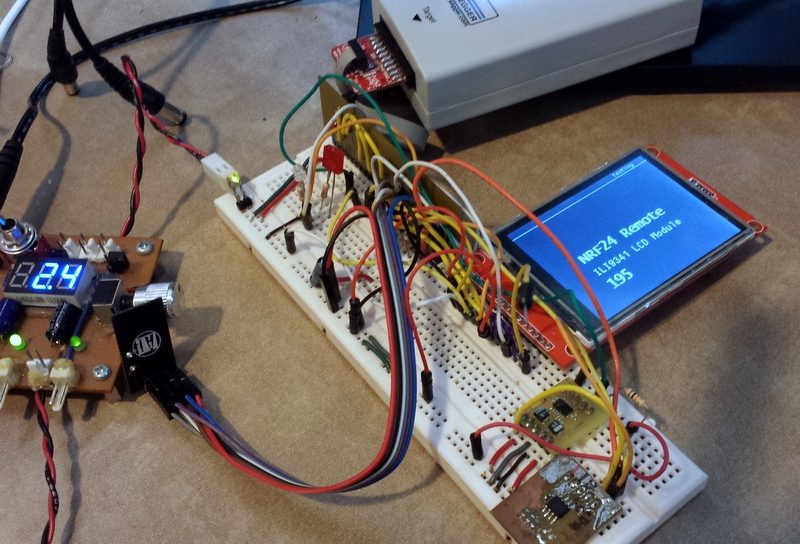KansaiRobot
Member
Hello.
I would appreciate some help in a problem with voltages.
First, I am using this TFT LCD
**broken link removed**
I know, I know, it is in japanese sorry. I ll translate for you:
sorry. I ll translate for you:
Ok, first question: Arduino Mega (and Arduino UNO) works with 5V based pins, right?? but this shield "that is ready to use" operates at 3.3V???
Second, I have successfully used this with the UNO. pins were connected directly. I am confused at this because I powered the shield with the 3.3V pin however the IO pins were connected directly. So were this 5V based???
(I checked with an oscillator and yes in fact, it is 5V based... but the power by the 3.3V pin was correct???)
Third I am trying to interface this and make it work with a STM32 nucleo that is entirely 3.3V and it does not work!. So maybe 5V are required??? 3.3V would not give a HIGH for pins that wait for 5V right?
Note that this product does not have a schematic but now just with my eye could see a AMS1117 chip there.... What is this chip doing there??
Any comment or even question will be greatly appreciated
I would appreciate some help in a problem with voltages.
First, I am using this TFT LCD
**broken link removed**
I know, I know, it is in japanese
LCD Shield (3.5)[ML035TF-TP]
->Specs& Functions:
Finished product targeted to the Arduino Mega2560. Pin header fully assembled, making it ready to use.
Display Resolution 240x400
LCD controller chip ILI9327
8 bit parallel data bus.
micdo SD socket mounted.
Touch controller chip XPT2046
Touch screen function available
Operation Power 3.3V
Ok, first question: Arduino Mega (and Arduino UNO) works with 5V based pins, right?? but this shield "that is ready to use" operates at 3.3V???
Second, I have successfully used this with the UNO. pins were connected directly. I am confused at this because I powered the shield with the 3.3V pin however the IO pins were connected directly. So were this 5V based???
(I checked with an oscillator and yes in fact, it is 5V based... but the power by the 3.3V pin was correct???)
Third I am trying to interface this and make it work with a STM32 nucleo that is entirely 3.3V and it does not work!. So maybe 5V are required??? 3.3V would not give a HIGH for pins that wait for 5V right?
Note that this product does not have a schematic but now just with my eye could see a AMS1117 chip there.... What is this chip doing there??
Any comment or even question will be greatly appreciated


